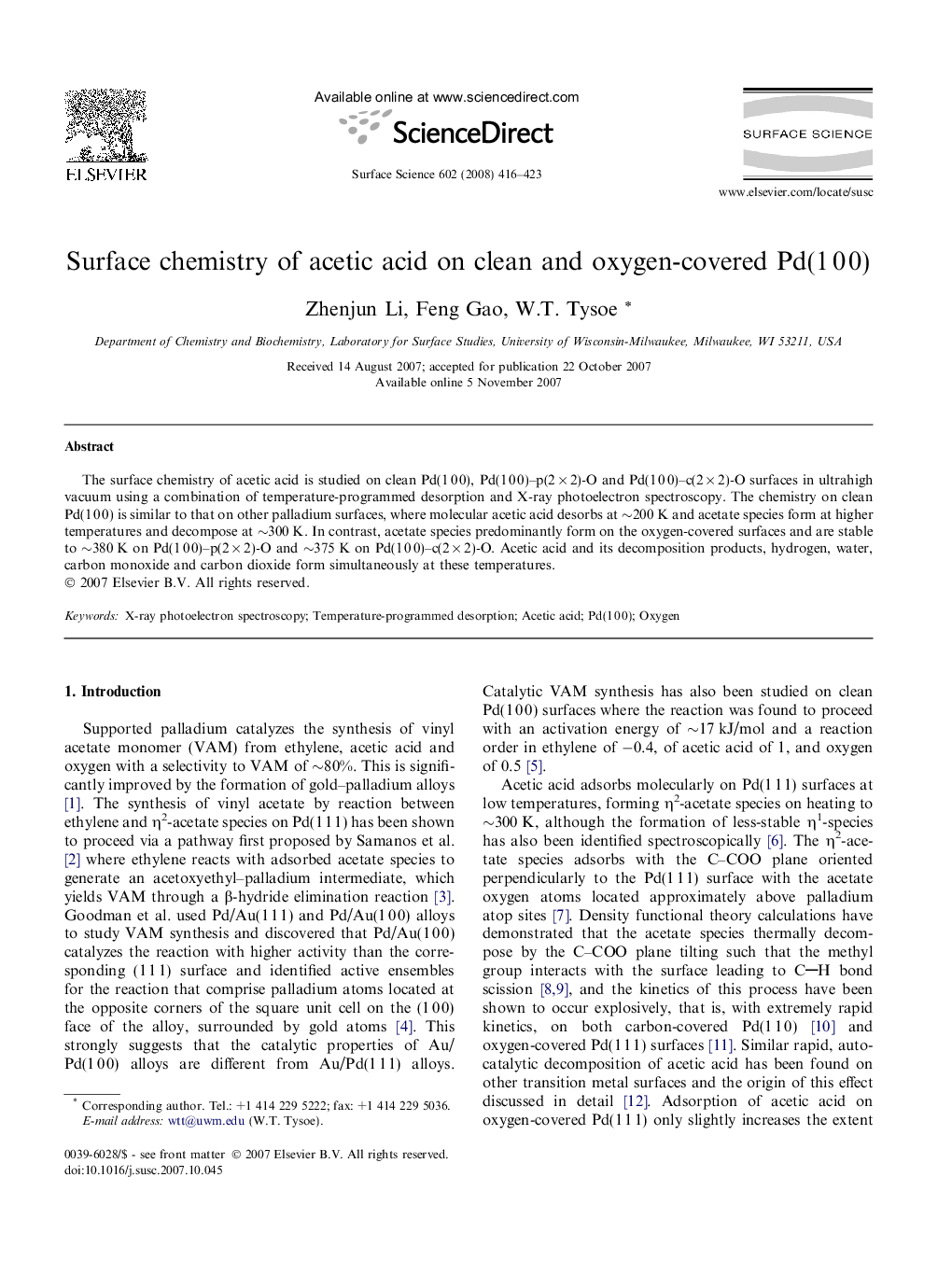| Article ID | Journal | Published Year | Pages | File Type |
|---|---|---|---|---|
| 5426181 | Surface Science | 2008 | 8 Pages |
The surface chemistry of acetic acid is studied on clean Pd(1Â 0Â 0), Pd(1Â 0Â 0)-p(2Â ÃÂ 2)-O and Pd(1Â 0Â 0)-c(2Â ÃÂ 2)-O surfaces in ultrahigh vacuum using a combination of temperature-programmed desorption and X-ray photoelectron spectroscopy. The chemistry on clean Pd(1Â 0Â 0) is similar to that on other palladium surfaces, where molecular acetic acid desorbs at â¼200Â K and acetate species form at higher temperatures and decompose at â¼300Â K. In contrast, acetate species predominantly form on the oxygen-covered surfaces and are stable to â¼380Â K on Pd(1Â 0Â 0)-p(2Â ÃÂ 2)-O and â¼375Â K on Pd(1Â 0Â 0)-c(2Â ÃÂ 2)-O. Acetic acid and its decomposition products, hydrogen, water, carbon monoxide and carbon dioxide form simultaneously at these temperatures.
